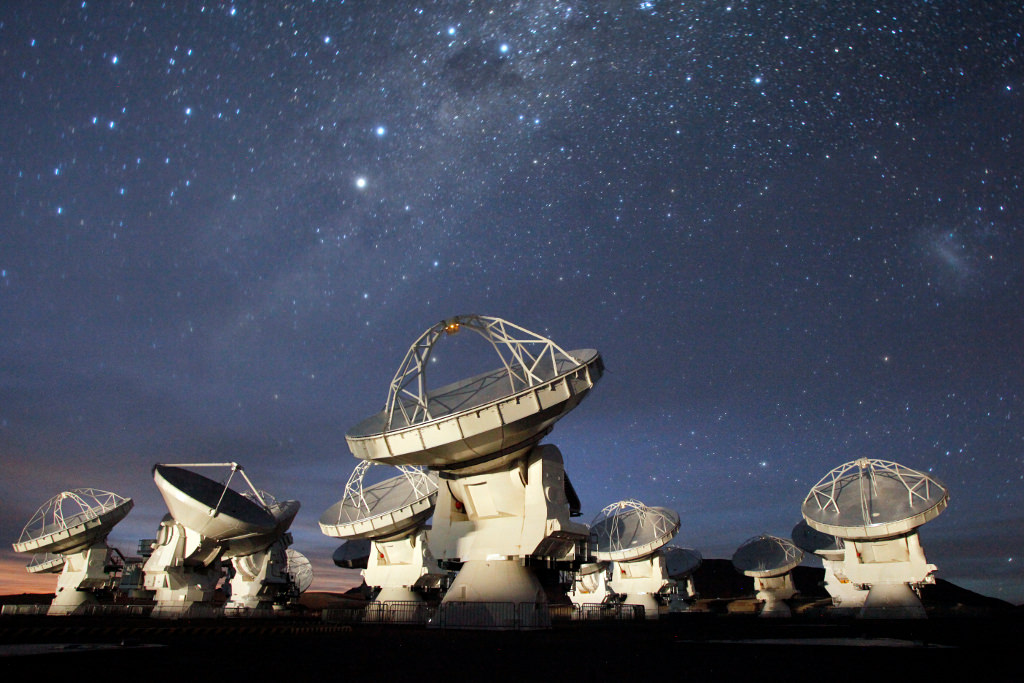Talk about an assembly line! Some early-stage galaxies created stars thousands of times faster than our Milky Way does today, according to new research. And it's puzzling astronomers.
"We want to understand how and why these galaxies are forming stars at such incredibly fast rates, so soon after the Big Bang," stated Scott Chapman of Dalhousie University, one of the researchers behind the discovery. "This could partially answer how our own galaxy, the Milky Way, was born billions of years ago."
This is just a hint of the high-definition view we'll receive from Chile's
Atacama Large Millimeter/submillimeter Array
(ALMA), its astronomers promise, since the array of dozens of telescopes was officially inaugurated this spring. (ALMA has been working for years, but slowly adding telescopes and definition as it goes.)
There were actually three papers released today about ALMA. So what did the observatory find out this time? Here's the nut graf:
[caption id="attachment_92536" align="alignnone" width="497"]
Gravitational microlensing method requires that you have two stars that lie on a straight line in relation to us here on Earth. Then the light from the background star is amplified by the gravity of the foreground star, which thus acts as a magnifying glass.[/caption]
-
The observed galaxies are "gravitationally lensed".
Galaxies are so massive that they can bend light from other galaxies, if put in the right spot with respect to Earth. We've seen this effect over and over again with the Hubble Space Telescope, but observations are less well-known in the millimeter spectrum of light in which ALMA observes. "Models of lens geometries in the sample indicate that the background objects are ultra-luminous infrared galaxies, powered by extreme bursts of star formation,"
stated a Nature paper
on the discovery.
-
These galaxies are further away than we thought.
By measuring the time it takes light from carbon monoxide molecules to reach us, the astronomers concluded these galaxies are much further away than previously measured, with some reaching as far back as 12 billion light-years away. (That's just 1.7 billion years after the
Big Bang created the universe
.)
-
The galaxies put star creation on fast-forward.
Looking back that far is like looking in a time machine -- we can see things that were happening only 1 billion years after the Big Bang. At the time, those galaxies were as bright as 40 trillion suns and created new stars at an extreme rate of 4,000 suns per year. (That, by the way, is 4,000 times faster than what our own galaxy does.)
You can read more about these results in
Nature
and the Astrophysical Journal (
here
and
here
.)
Source:
Canadian Astronomical Society (CASCA)
 Universe Today
Universe Today
